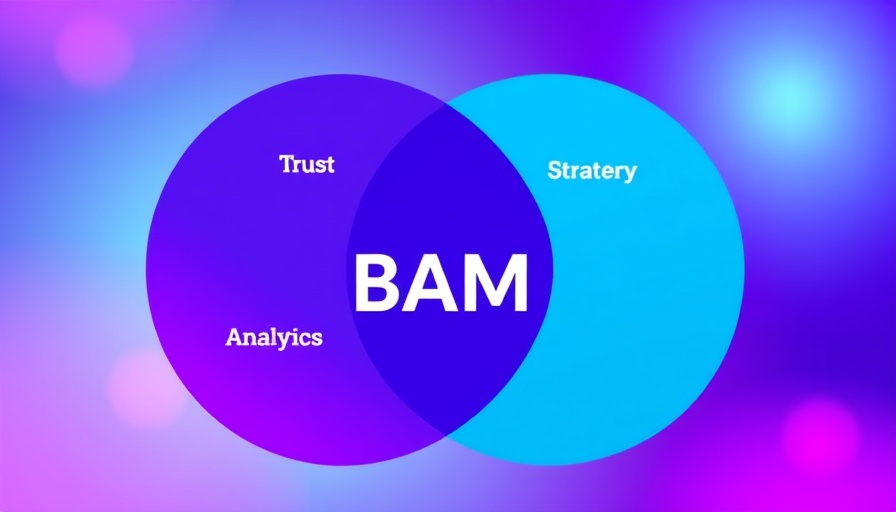
Understanding Best Answer Marketing in a Content-Driven Era
In today's digital landscape, where content is abundant yet often lacks depth, Best Answer Marketing (BAM) emerges as a guiding star for small and medium businesses (SMBs) seeking to establish credibility and trust. Amidst the rush of automated content creation driven by AI, the challenge remains: how can brands differentiate themselves in a sea of similar offerings? The focus on quality over quantity has never been more critical, as marketers grapple with delivering not just information, but engaging, trustworthy, and emotionally resonant content that fosters genuine connections with their target audiences.
The BAM Framework: Six Pillars of Success
At the heart of the BAM approach lies a structured framework designed to elevate B2B marketing practices. This framework consists of six interlinked pillars:
- Data-Informed: This pillar emphasizes the importance of leveraging insights from various sources—CRM data, SEO analytics, and audience research—to uncover the specific questions buyers are asking. Understanding buyer intent and behavior aids in crafting content that directly meets their needs.
- Integrated Strategy: Aligning content efforts with overarching business goals ensures that every piece of content serves a strategic purpose. By clearly defining target narratives, marketers can create cohesive campaigns that drive engagement.
- Trust Engine: Building credibility is paramount. By integrating trust signals from reputable sources—such as industry experts and original research—marketers can enhance their content’s authority.
- Experiential Content: This involves creating immersive and interactive content that not only informs but also engages, enabling buyers to feel the brand’s value rather than just perceiving it.
- Multi-Channel Discovery: With buyers increasingly relying on multiple channels to make decisions, it’s crucial for brands to maintain consistent visibility across various platforms.
- Full-Funnel Analytics: To measure the effectiveness of marketing efforts, continuous tracking and analysis of conversion metrics and customer feedback should be standard practice.
By leveraging these pillars, businesses can transform their marketing tactics into a holistic strategy that addresses the complexities of modern B2B buyer behavior.
Navigating Change in B2B Marketing
The B2B marketing landscape is rapidly changing, driven by technological advancements and shifting buyer preferences. The rise of self-service purchasing and the increasing demand for transparency are reshaping how brands communicate with potential clients. As noted in How A Best Answer Content Strategy Drives B2B Marketing Results, a successful B2B marketing strategy now demands a keen understanding of where and how buyers seek information.
Marketers should focus not merely on output, but on creating content that truly answers customer queries. For instance, while blogs filled with technical jargon are common, content that breaks down complex topics into digestible information is what truly resonates with modern buyers. This aligns perfectly with the BAM approach: providing the best answer is about offering insights that simplify decision-making.
Future Trends and Predictions in B2B Marketing
With the emergence of new technologies, such as AI and machine learning, the future of B2B marketing is poised for significant transformation. Brands that adopt an intent-based optimization strategy—focusing on content that anticipates and answers buyers’ specific challenges—are likely to experience improved engagement and conversion rates. Moreover, interactive content formats, like quizzes or calculators, will play an increasingly vital role in capturing buyer attention and generating leads.
As highlighted in 12 Proven B2B Marketing Strategies for Mid-market Growth, it is essential for businesses to continue evolving their strategies to meet the preferences of younger decision-makers, who favor transparency and authenticity over traditional sales pitches. Brands must embrace agile marketing practices that allow for rapid experimentation and iteration, ensuring that their strategies remain relevant and impactful.
Maximizing the Value of Best Answer Marketing
Understanding and implementing Best Answer Marketing equips small and medium-sized businesses with the tools needed to navigate the complexities of today’s digital marketing landscape. By focusing on creating high-quality, relevant, and trust-building content, these businesses can effectively position themselves as leaders in their respective markets.
In a world where authenticity and credibility are paramount, BAM serves as a vital strategy for marketers seeking to elevate their B2B messaging. As the paradigm shifts towards consumer-centric content, businesses that embrace these changes will not only capture attention but also foster lasting relationships with their customers.
Call to Action
If you're ready to elevate your B2B marketing game and ensure your brand is recognized as the best answer for customers seeking solutions, consider implementing the Best Answer Marketing strategy today. Start by assessing your current content practices and align them with BAM principles for a better, more engaging customer experience.
 Add Row
Add Row  Add
Add 



Write A Comment